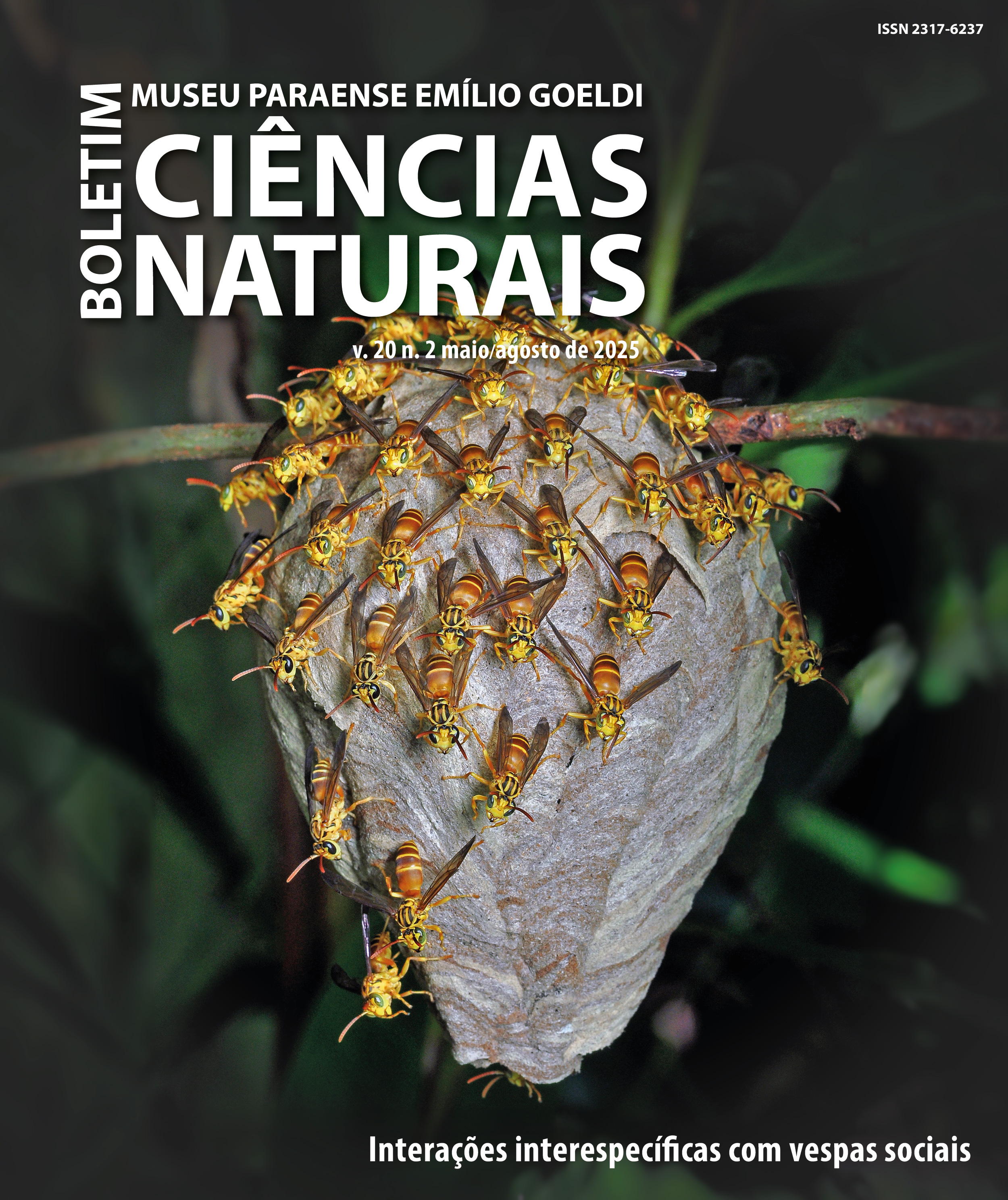Nesting of Partamona helleri (Friese, 1900) (Apidae) in an abandoned nest of Polybia scutellaris (White, 1841) (Vespidae) in Southeastern Brazil
DOI:
https://doi.org/10.46357/bcnaturais.v20i2.985Keywords:
Meliponini, Hymenoptera, Nest biologyAbstract
Social wasp nests are frequently reused by different species for nesting, obtaining food, or protection from the elements and predators. However, there are few records of nest reuse by bees of the Meliponini tribe. Therefore, the aim of this study is to report the use of an abandoned nest of the social wasp Polybia scutellaris by the social bee Partamona helleri. The record was made opportunistically, on May 7, 2024, in a building within an anthropized area, adjacent to a regenerating Atlantic Forest fragment, in the municipality of Inconfidentes, southern Minas Gerais State, Brazil. The bees occupied the entire social wasp’s nest, which was probably already abandoned. The bees did not use the brood cells of the nest for reproduction, but rather deposited material (a mixture of dirt and resins) inside the nest, which was covered on the top and sides, so that only the lower part of the nest was exposed. This reuse probably gave the bees energy savings and shelter for the colony in its early stages. Nevertheless, further studies are needed to understand the frequency of this reuse and whether the nests of social wasps are occupied when abandoned, usurped or shared by the bees.
Downloads
Published
Issue
Section
License
Publication means fully assigning and transferring all copyrights of the manuscript to the journal. The Liability Statement and
Assignment of Copyrights will be enclosed with the notice of acceptance. All the authors must sign the document and return it to the journal.








